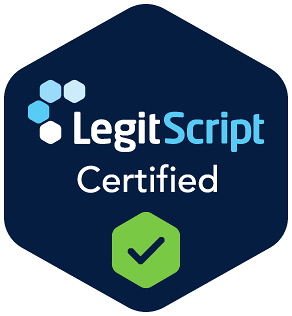Common mental disorders in children include attention-deficit/hyperactivity disorder (ADHD), anxiety disorders (such as separation anxiety and generalized anxiety disorder), behavioral disorders (like oppositional defiant disorder), autism spectrum disorder, and mood disorders (including depression). These disorders can significantly impact a child’s daily functioning and development, necessitating early identification and appropriate intervention.
Diagnosing mental illness in children is much different than in adults. Children are constantly growing and changing, and as a result, they encounter physical and psychological changes.
It is critical to seek treatment from a mental health professional to determine if a child has a mental disorder or if it is just part of growing up.
In this article, we explore seven common mental disorders in children.
Common Mental Disorders in Children
Currently, 5 million children in America have a mental disorder. Below are seven of the most common mental health disorders among children between three and seventeen.
Some disorders have the same symptoms, which is one reason it can be hard to form a diagnosis right away. To help a mental health professional get an accurate diagnosis, be as specific as possible when documenting your child’s symptoms.
Here are seven of the most common mental disorders in children:
1. Attention Deficit/Hyperactivity Disorder (ADHD)
Children are expected to be hyperactive, and some have trouble focusing on tasks for a long time. However, some children have symptoms that extend outside of the “normal” range of behaviors and meet the criteria for ADHD. Common symptoms of ADHD in children include the following:
- Difficulty focusing and staying on task
- Difficulty sitting still and fidgety
- Impulsive
- Easily distracted
- Disorganized
- Forgetfulness
- Cannot listen well
- Talks a lot or interrupts others talking
- Easily bored
Learn more about AD/HD treatment.
2. Anxiety Disorders
Anxiety is prevalent among children, especially those in their pre-teen and teen years. There are several anxiety disorders diagnosed among children, including generalized anxiety, obsessive-compulsive, panic, phobias, separation anxiety, social anxiety, and post-traumatic stress disorders.
Each type of anxiety disorder has specific diagnostic criteria. However, there are some general symptoms to look for that signal a child may be dealing with anxiety, including the following:
- Sleep disturbances
- Feeling aches and pains
- Avoiding certain people, places, or things
- Trouble concentrating
- Tantrums
- Excessive worrying
- Nervousness
- Being clingy to people they trust
- Avoid being alone or avoiding social situations
- Shaking, sweating, fidgeting behaviors
- Panic attacks
- Obsessions or compulsions
Learn more about anxiety treatment.
3. Depressive Disorders
Research shows over 2.5 million youth have severe major depression. Of youth between 12 and 17, 15% report having at least one major depressive episode in the previous year.
Depressive symptoms may include:
- Feeling sad or blue for no apparent reason
- Easily angered or irritated
- Complaining of physical pains
- Over-sleeping
- Feeling hopeless or worthless
- Appetite changes
- Lacking energy and motivation
- Thinking about death or suicide
Learn more about depression treatment.
4. Bipolar Disorder
Bipolar disorder refers to a brain disorder involving mood swings that go from depression and extreme lows to the opposite, mania, or extreme highs. Knowing the symptoms of depression and mania and how often the mood swings occur will help your child’s doctor make a diagnosis. Symptoms of mania may include:
- Acting overly happy or silly for long periods
- Is easily irritated or short-tempered
- Rapid speech
- Sleep disturbances, usually lack of sleep
- Trouble focusing
- Showing interest in pleasurable, even risky behaviors
- Inflated ego
Depressive symptoms in bipolar disorder are the same as those listed for depressive disorders above. The key to bipolar disorder is the swing from mania to depression. They go beyond the usual ups and downs that all children experience. If a child’s symptoms get in the way of academic, extracurricular, or social activities, it is time to seek help.
Learn more about bipolar disorder treatment.
5. Disruptive Behaviors Disorders
Some children have behaviors that seem like they are uncooperative and defiant. Their disruptive behaviors can be so destructive that they interfere and prevent authority figures from doing their jobs. For example, an outburst in a classroom prevents teachers from instructing other children and managing other students. The most common disruptive behavior disorders include conduct disorder, oppositional defiant disorder, and impulse-control disorder.
The severity of symptoms can help determine which disorder is present. Symptoms may include:
- Being uncooperative and argumentative
- Refusing to follow rules or instructions
- Annoying others intentionally
- Blaming others for their mistakes
- Behaving in angry and spiteful ways
- Lacking respect for others
- Bullying others
- Destroying others’ property
- Running away from home or school
6. Eating Disorders
Children of all ages can have an eating disorder. They typically demand a lot of themselves. Many have low self-esteem, depressed mood, and all-or-nothing thinking. Below are the most common types of eating disorders among children.
- Anorexia nervosa- a disorder in which children obsess about their weight or food. Anorexia is associated with food restrictions or being able to have control over something. In this case, what they eat or drink.
- Bulimia- a disorder that involves binging on foods and, after the binge, purging the food to restrict calorie consumption.
- Binge-eating- a disorder that involves binging on foods but without purging afterward. Instead, youth are left feeling overwhelming guilt.
Learn more about eating disorder treatment.
7. Substance Use Disorders
Children and youth of all ages are experimenting with alcohol and drugs. Some develop a substance use disorder. Substance use disorders are when children misuse substances in unhealthy ways. Substance use disorders have specific symptoms that every parent can recognize, including:
- Hiding alcohol or drugs in their room
- Using alcohol or drugs before or after school
- Skipping school to use drugs or alcohol
- Academic decline
- Hanging out with others who drink or use drugs
- Avoiding activities they once enjoyed
- Asking for money more than usual
- Not caring about personal hygiene
- Physical health problems
- Stealing or lying so they can continue using substances
Learn more about addiction & substance abuse treatment.
Treatment for Mental Disorders in Children
There is no one-size-fits-all treatment for children with mental illness. Just the opposite is needed: a unique, individualized treatment plan. The first step in getting help is to request a comprehensive evaluation, which will determine the exact treatment needs.
Most treatment plans include medication when needed. Psychiatrists can prescribe the best medicine at the dose that will benefit your child the most. Behavioral therapies are another vital part of a treatment plan. Therapists teach children the skills to control behaviors at home, school, and socially.
Mental illness affects the whole family. Therefore, therapists work with parents and family members to create specific steps to take to help a child overcome mental health issues.
The Mental Health Center is affiliated with doctors and therapists who can create an individualized treatment plan tailored to your needs.
Contact us today to schedule an appointment.


